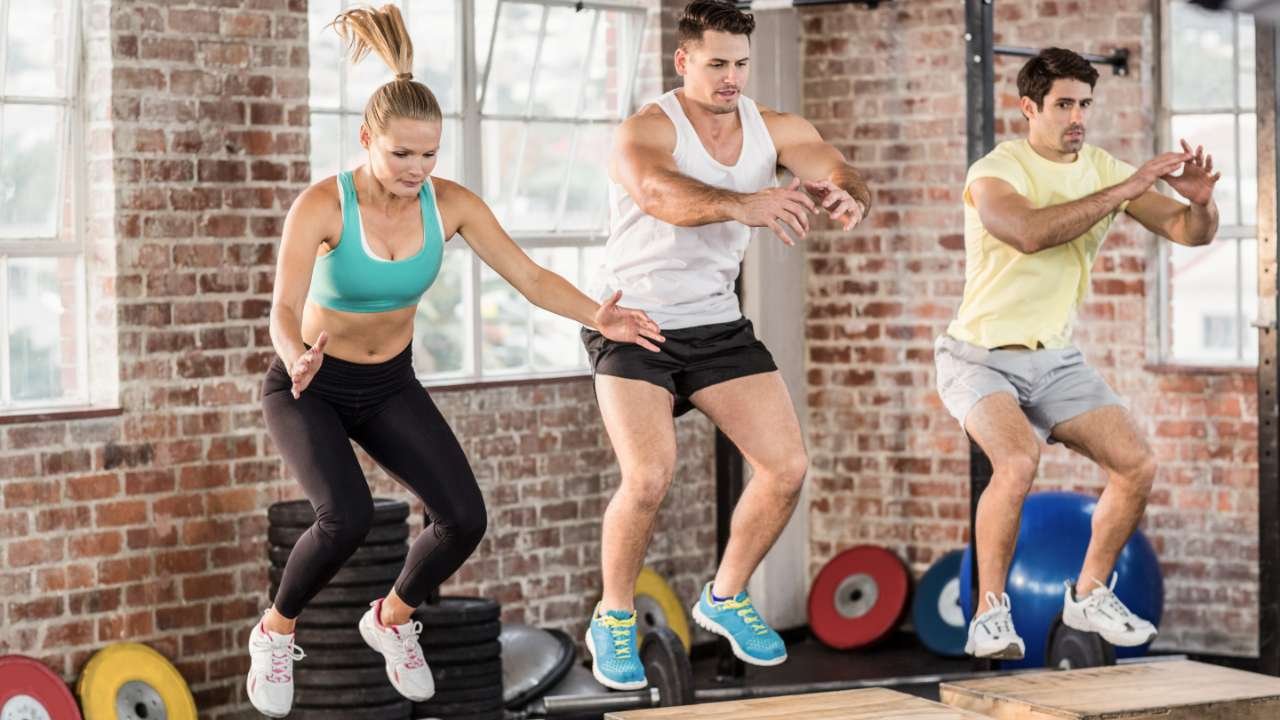Which workouts are more effective for increasing strength? We analyze an exciting study using plyometric exercises.
Plyometric exercises are exercises with your weight. This includes jumping rope. But usually, this term means high/long jumps or, say, push-ups with cotton. In general, some explosive force is performed with its weight.
Usually, studies of plyometric exercises are carried out with volleyball players, football players, and representatives of other similar sports.
Research of plyometric
- The Effect of Plyometric Training in Volleyball Players: A Systematic Review
- Effect of Plyometric Training on Vertical Jump Performance in Female Athletes: A Systematic Review and Meta-Analysis
But a group of people in white coats decided to check what would be more effective for developing strength: classical exercises, plyometric exercises, or a combination of both?
As usual, the people were divided into three groups:
One performed only “strength workout,” the second only “plyometrics,” and the third combined both.
The height of the jump evaluated the result:
- In the first group, the jump height increased by 3.3 cm.
- In the second – by 3.8 cm.
- And in the third – as much as 10.7 cm.
It is a pity that there is no detailed training scheme according to which the subjects worked. I want to take a look. There is often a lack of clarity in such studies. Perhaps the strength of the third group increased due to the volume of training. The combination of different exercises created a greater volume and, accordingly, more significant muscle growth. But logically, the amount of training should have been plus or minus the same.
But most likely, this result was caused by what we are talking about most often: different types of exercises and the number of repetitions create other loads for different types of muscle fibers, which eventually leads to more complex hypertrophy.
Or maybe it’s something else
I think that the first group (Strength Workout) simply did not have enough practice of the jump itself and the establishment of solid neuromuscular connections in this movement.
The second group perfectly established neuromuscular connections, but it did not have enough training volume. It is logical that with a classic multi-repeat training, more muscle cells will be involved in the work than with “plyometrics” or performing the exercise “1-2 times”.
And the third group included a maximum of muscle cells in work and “honed” the jump itself, firmly fixing the neuromuscular connections in this movement. As a result, it is quite logical to show the result.
Plyometric for increasing strength?
Thus, I would not consider “plyometrics” as a tool for increasing strength. But it is obvious that if you want to increase strength in a particular exercise, you need to perform it accurately in your program. Like, you can’t just do push-ups on the uneven bars for half a year and then show the maximum result in the bench press (even though the same muscles work in both exercises). As well as it is impossible to show the maximum result in a jump, only squatting, and not jumping at all.
Second: to show maximum strength, you need to perform a specific exercise in the power range. It is also necessary to include a maximum of muscle cells in this group in the work so that later they can turn on simultaneously. Roughly speaking, a single maximum is an indicator of the simultaneous activation of the maximum of muscle cells.
But when we pull up, 100 kg for one time, and we can no longer, we still have the strength to lift several times, say 70 kg. That is, there are still many cells that are ready to work “here and now.” That is why a high number of repetitions (on average, 10) is used in classical mass-gathering workouts.
Well… Working for 10 repetitions (on average), we activate the maximum cells and create their hypertrophy. As a result, when we switch to 1-2 repetitions, we can simultaneously include more hypertrophied muscles in work. And the one-time maximum will be higher. I already wrote about this when I was analyzing cycling.
To find out more:
Combination of cycling for best result
You can work for 10-15 repetitions and increase your one-time maximum in 1 repetition. But the best result can be achieved with a combination of cycling.
In other words, the experiment with “plyometrics,” in my opinion, did not show that it is “plyometrics” that is effective, in combination with”classics.” He showed that a combination of different load types is effective, which can either be combined in one training session or carried out in the form of cycling. I am sure that the maximum result would be shown by a group in which squats for 10-15 repetitions, squats for 1-2 repetitions, + periodically high jumps, exclusively for honing the technique, would be combined.
100% of these guys would jump the highest.
I hope that this material was helpful to you and brought another drop of clarity to building the training process.
youwillfit’s YouTube Channel
